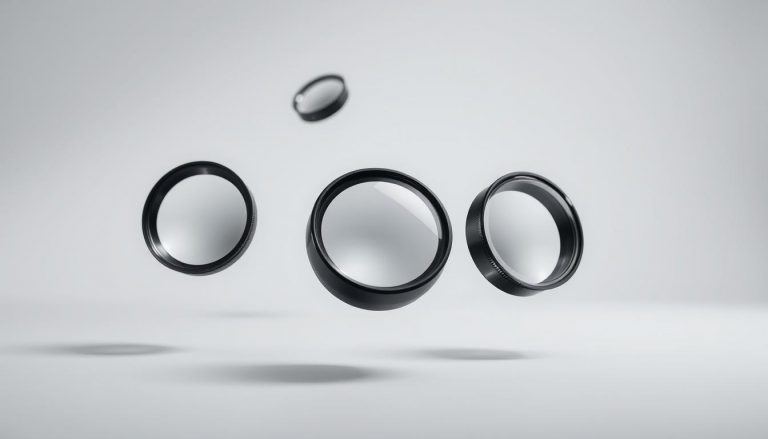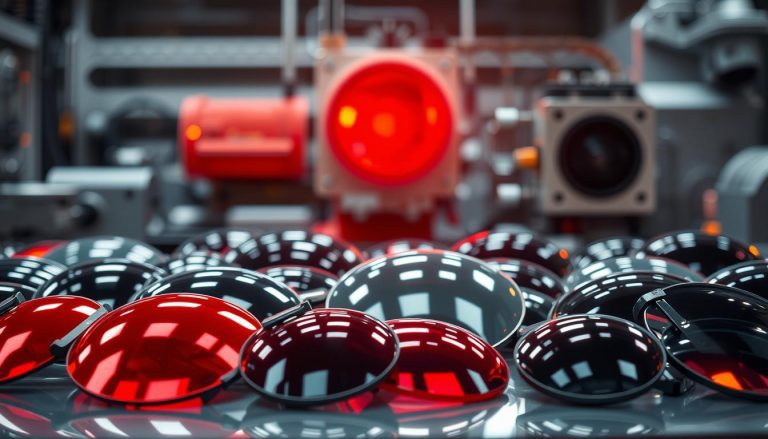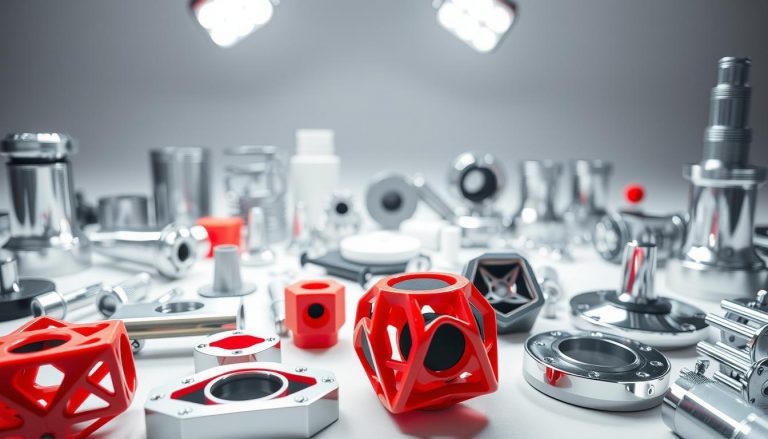High-quality lenses, especially precision lenses made of plastic, are becoming increasingly important. They are made for light sources and are lightweight. They also have great functions.
They are very useful in industry and medicine. We explain how they help in modern technologies and devices. You can find more information in our article on polymethyl methacrylate (PMMA).
Key findings
- Precision lenses made of plastic are lightweight and functional.
- They are used in industry and medicine.
- These lenses offer advantages such as temperature resistance.
- Visual clarity is a decisive quality feature.
- Innovative manufacturing processes are transforming production.
Introduction to plastic precision lenses
Plastic lenses are an important step in precision optics. They are used in many areas. This shows how far technology and material science have progressed.
The introduction of plastic lenses has led to the development of new lenses for light sources. These lenses meet high performance and efficiency requirements.
Plastic lenses have many advantages. They are lightweight, flexible and adaptable. This makes them useful in many industries.
These lenses enable precise light control. They also help to reduce costs. Engineers and decision-makers recognize the importance of this technology.
What are plastic precision lenses?
Precision lenses made of plastic are a modern solution for optical elements. The definition of precision lenses does not only refer to their function. It is also about the special materials from which they are made.
These lenses can precisely focus or scatter light beams. They are therefore ideal for many high-tech applications.
Plastic optics have many advantages. They offer customized shapes and exceptional optical properties. The most common types include convex and concave lenses.
Materials such as polycarbonate and PMMA are used in production. These are lightweight and robust.
The properties of plastic lenses are an important point. They are lighter than traditional glass components. They are also flexible, which is useful in many areas.
The use of plastics opens up new possibilities in lens production. It contributes to the innovative strength of the market.
Advantages of plastic lenses for light sources
Plastic lenses have many advantages for light sources. They are lightweight, flexible and withstand temperature fluctuations well. This makes them a popular choice in technology.
Weight and flexibility
A major advantage of plastic lenses is their lightweight and flexible design. They are lighter and more flexible than glass components. This makes handling and installation easier.
Thanks to their flexibility, they can take on complex and creative shapes. This is often difficult with glass.
Resistance to temperature fluctuations
Plastic lenses are very resistant to extreme temperatures. They maintain their performance even at high or low temperatures. This is particularly useful in industrial environments.
Areas of application for plastic precision lenses
Precision lenses made of plastic are very important in many areas. They are versatile and of high technical quality. This is why they are often used in industry and medicine.
Industrial applications
Plastic lenses are very important in industrial lighting technology. They are used in:
- Lighting systems that require efficient light distribution
- Optical systems that require precise light control
- Products with special weight and flexibility requirements
Thanks to their lightness and flexibility, innovative designs can be created. These designs improve both the functionality and the aesthetics of the products.
Medical technologies
In the field of medical optics, plastic lenses are used in:
- Endoscopes for minimally invasive procedures
- Laser therapy devices for targeted treatment
- Diagnostic instruments that require precise imaging
Plastic lenses in medical technology offer cost-efficient solutions. They also increase safety and user-friendliness.
Manufacturing process for plastic lenses
The production of precision plastic lenses uses modern methods. These methods ensure efficiency and quality. Injection molding, thermoforming and CNC machining are the most common processes.
In injection molding, molten plastic is injected into a mold. This creates a lens. This process is fast and saves time. Thermoforming uses heat to shape plastic sheets. It is good for simple shapes and saves costs.
CNC machining achieves maximum precision. Computer-aided machines mill the plastic with great precision. This method is ideal for prototypes and small series.
Quality control is very important. We check the lenses regularly. This is how we ensure that they meet the high requirements of precision manufacturing. Modern machines increase efficiency.
| Production method | Advantages | Disadvantages |
|---|---|---|
| Injection | molding High production speed, low margins | High investment costs for molds |
| Thermoforming | Cost-effective, simple geometries | Limited precision |
| CNC machining | High precision, versatile application | Slow production speed |
Quality features of high-quality precision lenses
The quality of lenses is very important. It determines how well they work and how long they last. Optical clarity and good coatings are particularly important. These influence how light passes through the lens and the image we see.
Optical clarity
Optical clarity is a key feature. It means that the lens transmits light without distortion. Special manufacturing processes ensure that the lens transmits a lot of light.
This is very important for many applications. Therefore, optical clarity should not be underestimated when selecting lenses.
Surface coatings
The right coating technique can improve the service life and performance of lenses. There are various coating techniques that protect against scratches, reflections and UV rays. These protective coatings not only improve the function, but also the quality of vision.
It is important to find out about the different options. This is how to find the best products. You can find out more on Maxnext.
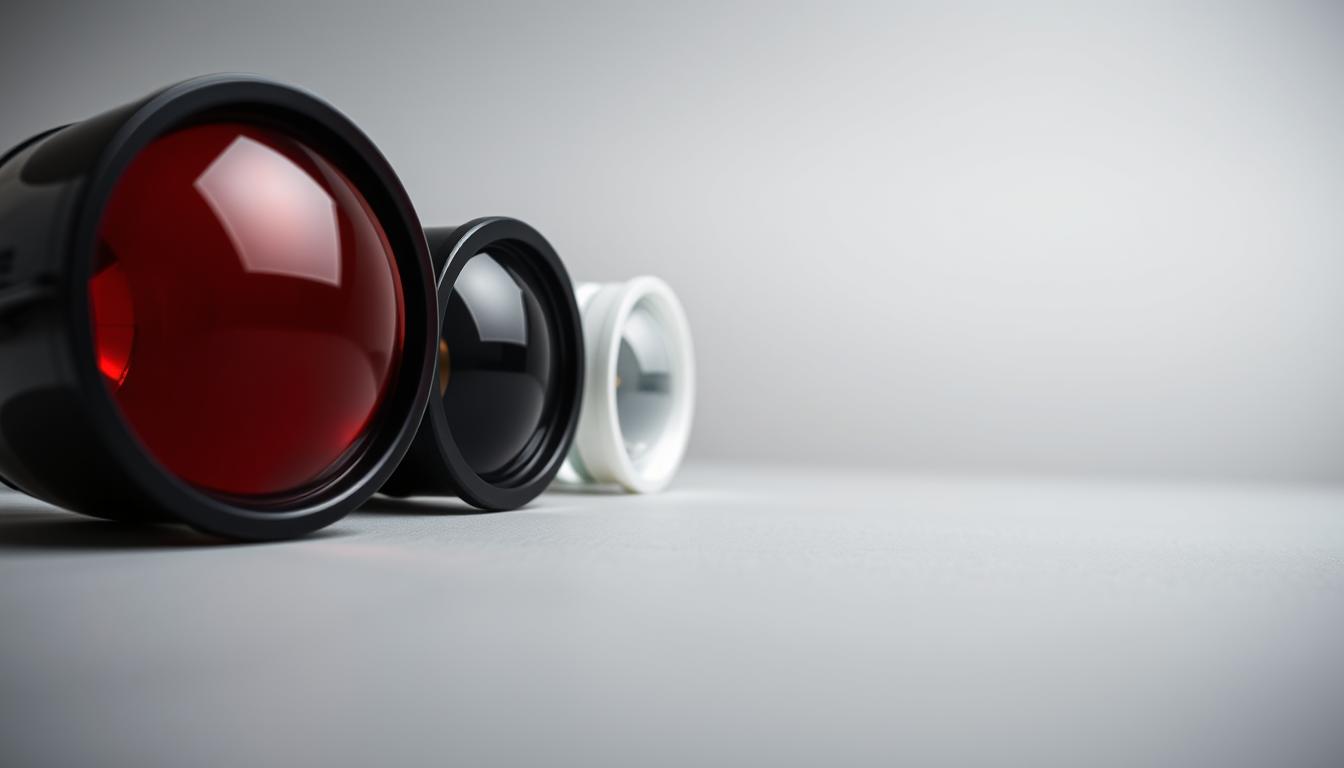
| Quality feature | Significance | Advantage |
|---|---|---|
| Optical clarity | Maximum light transmission without distortion | Improved image quality |
| Surface coating Protection | against scratches and reflections | Increased service life of the lens |
Plastic precision lenses compared to glass components
The comparison between plastic and glass shows what makes lens materials so special. Plastic lenses are light and flexible. This makes them very popular. Glass components, on the other hand, are heavier and more sensitive.
Plastic lenses withstand temperature fluctuations well. This is good for extreme conditions. Glass components can break more easily and are expensive. The advantages and disadvantages should be carefully considered.
Plastic is also cheaper to produce than glass. This helps companies to be more economical. They can produce more sustainably. You can find more information here.
The decision between plastic and glass depends on the project requirements. A good choice makes development easier and saves costs.
Innovations in lens production
In today’s technological world, lens innovations are very important. New techniques improve efficiency and precision. For example, rapid prototyping and additive manufacturing enable the fast production of plastic lenses.
Optical developments improve lens quality. AI-supported methods are revolutionizing the manufacturing process. They help to respond precisely to customer requirements.
Advances in lens production bring many advantages:
- Faster production times
- Increased flexibility in designs
- Improved cost efficiency
- Higher product quality thanks to more precise manufacturing processes
These innovations demonstrate the industry’s commitment to adapting to changing market needs. The future of lens production will be shaped by these developments. There are promising prospects for the entire industry.
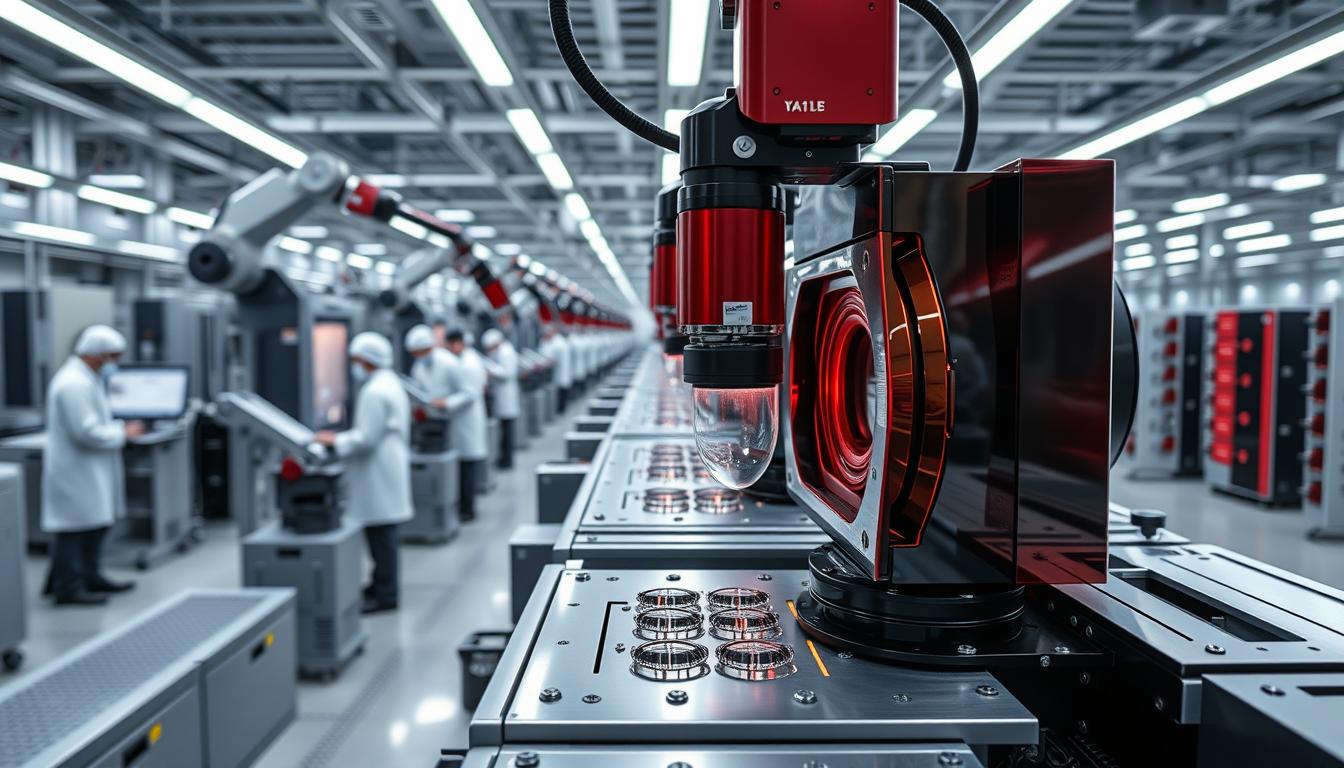
Conclusion
In this conclusion plastic lenses we look at the great features of precision plastic lenses. They are lighter and more flexible than other lenses. They are also very resistant to temperature fluctuations.
They can be found in many areas, from industry to medicine. There you need lenses that are very precise.
Plastic lenses are a great alternative to old glass components. Thanks to new manufacturing processes and innovations, they are becoming increasingly important. They play a major role in future technology.
The future of lens production looks bright. New technologies and AI are opening up many possibilities. We want to show you why precision lenses made of plastic are so good. This will make it easier for you to find the right optical component.
FAQ
What are the main advantages of plastic precision lenses?
Plastic lenses are light and flexible. They can withstand temperature fluctuations. They also offer many design options. This makes them easy to handle and durable.
In which industries are plastic lenses mainly used?
Plastic lenses can be found in many areas. Especially in medicine, for endoscopes. Also in industry, for lighting and optical systems.
Which manufacturing processes are used for precision plastic lenses?
Injection molding, thermoforming and CNC machining are used. Each process is carefully checked. This ensures that the lenses meet high standards.
What are the important quality features of high-quality plastic lenses?
Good plastic lenses are optically clear. They have protective coatings. These protect against scratches, reflections and UV rays.
How does the comparison of plastic lenses and glass components compare in terms of cost?
Plastic lenses are often cheaper. They are flexible in design and impress with their weight and durability.
What innovations will shape the future of lens production?
New technologies include rapid prototyping, additive manufacturing and AI design. They are changing the manufacturing process. And improve quality.



